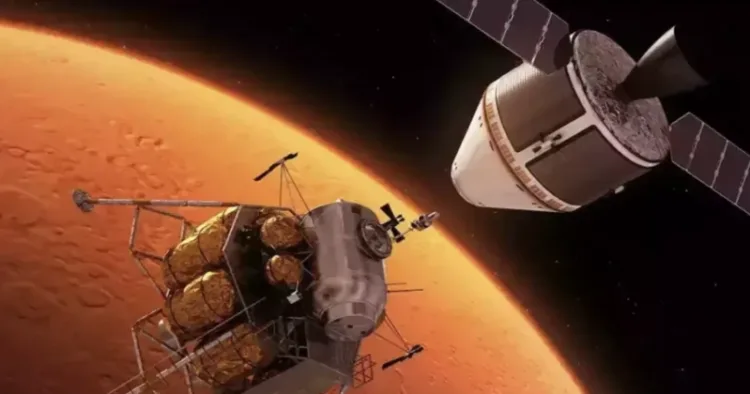The Indian Space Research Organisation (ISRO) is preparing to embark on its first mission to Venus, marking a significant milestone in India’s growing space exploration capabilities. The Venus Orbiter Mission (VOM), also known as Shukrayaan-1, is set for launch in March 2028, with the spacecraft scheduled to reach Venus by July 19, 2028. This mission will be India’s first venture into exploring the planet often referred to as Earth’s twin due to its similar size and composition.
The mission will be launched aboard ISRO’s LVM-3 (Launch Vehicle Mark-3), a powerful rocket known for its success in launching heavy payloads to space. The spacecraft will be placed in an elliptical parking orbit around Earth before embarking on its 112-day journey to Venus. According to ISRO’s targeted timeline, the Earth departure date is March 29, 2028, and Venus Orbit Injection (VOI) is expected on July 19, 2028.
Upon reaching Venus, the spacecraft will enter an initial elliptical orbit of 500 km x 60,000 km around the planet. ISRO will employ advanced aerobraking techniques over the next six to eight months to gradually lower the spacecraft’s orbit to a more suitable science orbit at 200 km x 600 km. This final orbit will allow for optimal scientific observations, with an inclination of approximately 90 degrees.
The Venus Orbiter Mission will carry 19 scientific payloads designed to study various aspects of Venus’s atmosphere, surface, and its interaction with the Sun. Of these, 16 are developed by Indian scientists, while two are collaborative efforts between Indian and international institutions. One international payload, the Venusian Neutrals Analyzer (VNA), will be provided by the Swedish Institute of Space Physics (IRF). This instrument will investigate the interaction between solar particles and Venus’s atmosphere.
Key scientific objectives of the mission include:
- Mapping the Surface and Atmosphere: High-resolution mapping of Venus’s surface topography, cloud structures, and atmospheric composition.
- Studying Volcanism and Seismic Activity: Investigating potential active volcanic or seismic activity on the surface.
- Solar Interactions: Exploring the interactions between Venus’s atmosphere and charged particles from the Sun, contributing to a deeper understanding of space weather around the planet.
- Airglow and Water Vapor Mapping: Studying the phenomenon of airglow in the planet’s atmosphere and mapping water vapor levels.
- Subsurface Characteristics: Analysing the subsurface of Venus to gain insights into its geological history and current activity.
These payloads will enable detailed observations of Venus’s thick, carbon dioxide-rich atmosphere, which contains clouds of sulfuric acid. By using synthetic aperture radar, infrared and ultraviolet cameras, and various sensors, the spacecraft will also be able to peer through the dense clouds and study the surface below, unravelling mysteries of one of the most volcanically active planets in the solar system.
Beyond its scientific goals, the Venus Orbiter Mission is also set to test several advanced technologies critical for future planetary missions. These include aerobraking and thermal management techniques, which will be used to maintain the spacecraft’s stability and protect it from the harsh environment of Venus, where surface temperatures can exceed 450°C. ISRO will demonstrate these techniques over the course of the mission’s five-year science phase.
The Venus Orbiter Mission is a collaborative effort with contributions from several international partners, including Russia, Sweden, France, and Germany. This cooperation highlights India’s increasing role in global space exploration initiatives. Sweden’s contribution of the VNA instrument further underscores the importance of international partnerships in advancing scientific understanding of the planet.
Venus, often referred to as Earth’s twin, remains one of the least explored planets in our solar system despite its proximity to Earth. With its scorching temperatures, intense volcanic activity, and thick atmosphere, Venus presents both challenges and opportunities for scientific discovery. The Venus Orbiter Mission will help scientists unlock the planet’s many mysteries, from its atmospheric dynamics to its geological processes, while also offering insights into how Earth-like planets evolve over time.
Furthermore, the mission’s success will showcase India’s growing expertise in space exploration and planetary science, following the success of ISRO’s missions to Mars (Mangalyaan) and the Moon (Chandrayaan). It will also serve as a platform for demonstrating advanced space technologies, positioning ISRO for future deep-space missions.



















Comments